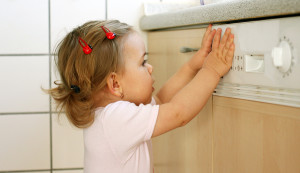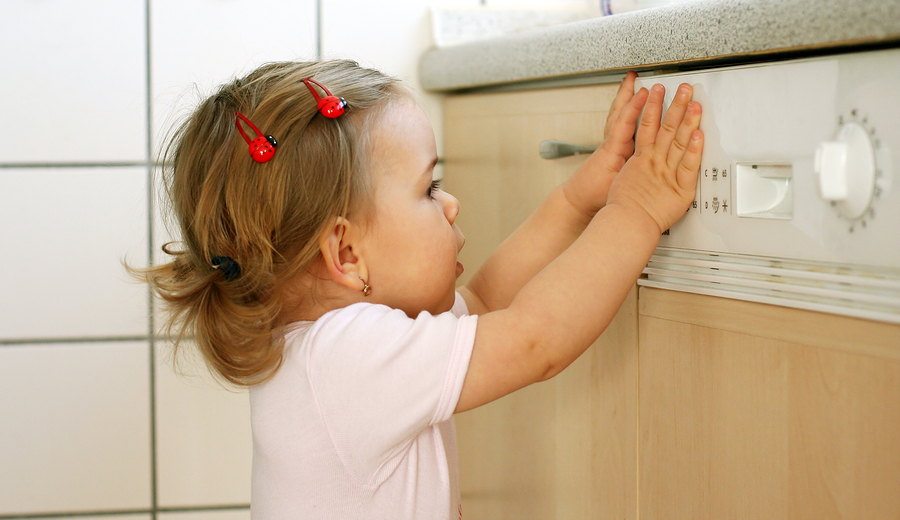Hazardous Substances Found in Every Home
 Many popular household products, though reasonably safe when stored, handled, used, and disposed of properly, still contain toxic chemicals or can degrade in a manner that makes them dangerous. Experts estimate that the average home contains three to eight gallons of hazardous substances, most of which are found in kitchens, bathrooms, basements, and garages. With regard to possible dangers, young children are particularly at risk because they are likely to be exposed to toxins in ways that adults typically are not. For example, children often crawl around and play on the floor, and put also their hands and toys into their mouths.
Many popular household products, though reasonably safe when stored, handled, used, and disposed of properly, still contain toxic chemicals or can degrade in a manner that makes them dangerous. Experts estimate that the average home contains three to eight gallons of hazardous substances, most of which are found in kitchens, bathrooms, basements, and garages. With regard to possible dangers, young children are particularly at risk because they are likely to be exposed to toxins in ways that adults typically are not. For example, children often crawl around and play on the floor, and put also their hands and toys into their mouths.
Here are some common types of potentially hazardous products that many people have around the house:
- Ammonia – This volatile compound can irritate the respiratory system and mucous membranes if inhaled, and can cause chemical burns if spilled on skin. It’s important to note that ammonia reacts dangerously with bleach by producing deadly fumes, so these two substances should never be mixed together in any form.
- Antifreeze – Made of ethylene glycol, this sweet-smelling chemical can be attractive to both children and pets. If swallowed, it can cause serious damage to the brain, heart, kidneys, and other internal organs.
- Carpet and upholstery cleaner – Most formulas use highly toxic substances to “overpower” stains. Some examples include perchlorethylene, which can cause liver, kidney, and nervous system damage; and ammonium hydroxide, which is highly corrosive and irritating to eyes, skin, and respiratory passages.
- Dishwasher detergent – Many products contain high concentrations of chlorine in dry form, a common source of poisoning in children.
- Drain cleaner – Drain cleaners usually contains lye or sulfuric acid, both of which are extremely caustic and can cause serious chemical burns if spilled on skin, and blindness if splashed in eyes.
- Laundry detergent – Most laundry aids contain a variety of chemicals which, if ingested, can cause nausea, vomiting, convulsions, and coma. Some people are also sensitive to the dyes and perfumes contained in detergents.
- Oven cleaner – Some types contain sodium hydroxide or potassium hydroxide, both of which are extremely corrosive and can be deadly if swallowed. These substances can also cause chemical burns on the skin if touched or in the lungs if inhaled.
To minimize the risks associated with hazardous substances in your home, be sure to read product labels thoroughly and follow all usage instructions carefully. Look for words like “warning,” “caution,” and “danger.” Buy only what you will use, and if you have more than you need, give the extra products to friends, neighbors, or charities to use, or dispose of them properly at a hazardous waste collection site. Also, consider using safer alternatives, if available. If you suspect that someone has been poisoned, call 9-1-1 or a poison control center immediately.
For further information on this and other health- and wellness-related topics, please feel free to contact or visit the South Tampa Immediate Care walk-in clinic.













